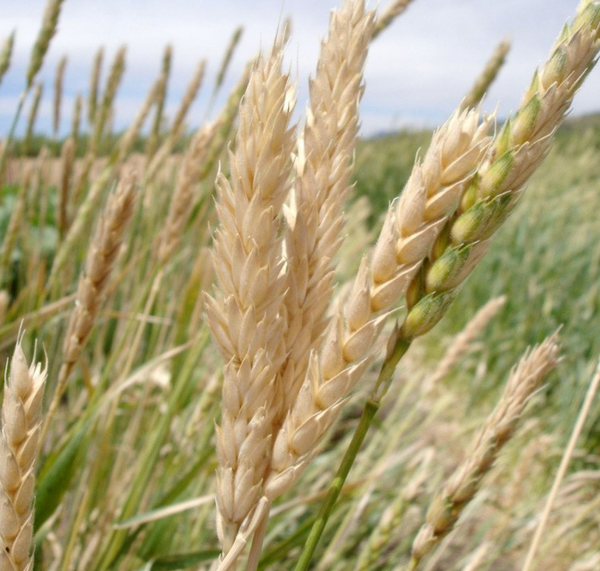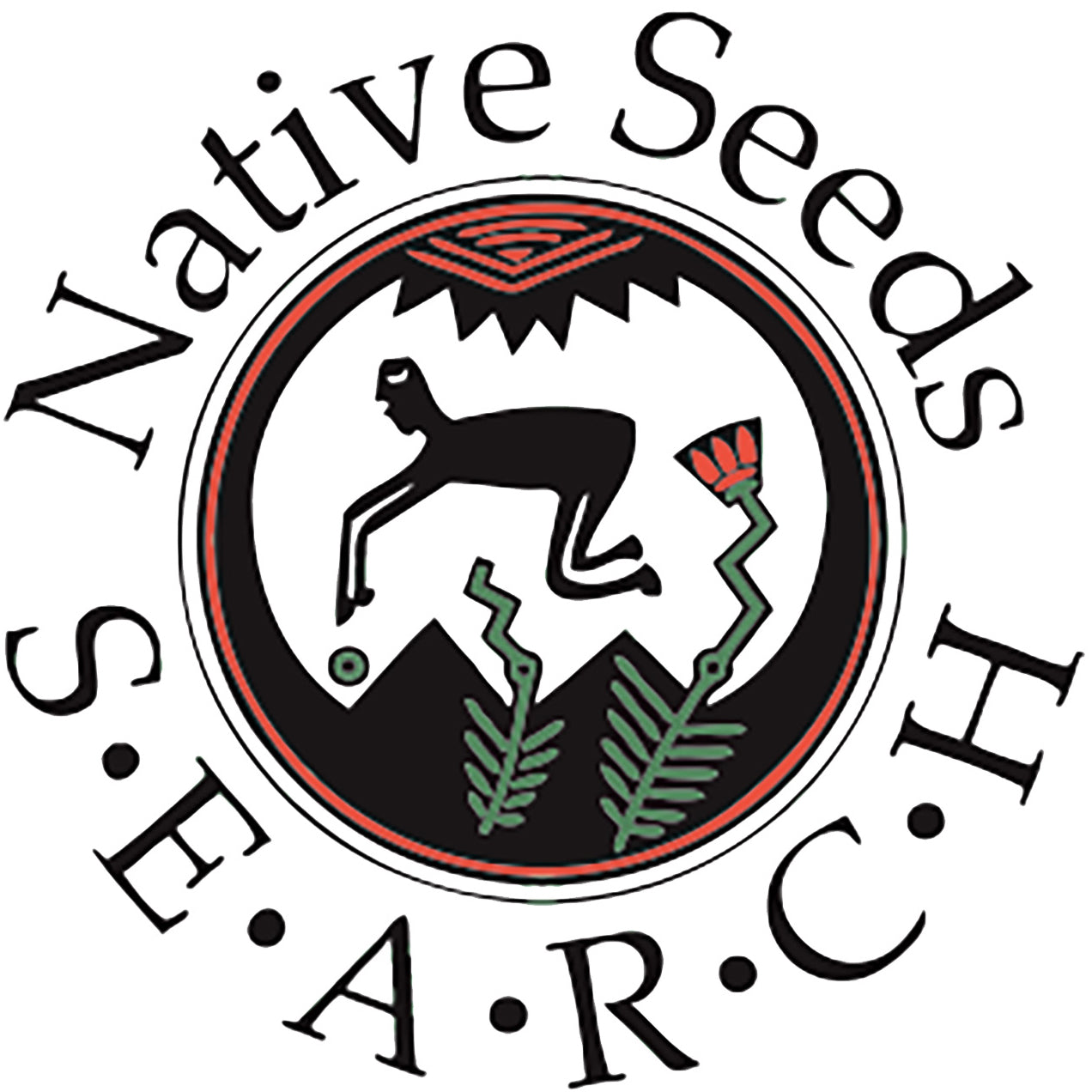
By Melissa Kruse-Peeples, NS/S Education Coordinator.
In the lyrics of America the Beautiful, the line “amber waves of grain” does not necessarily conjure up the image of farmland in the desert Southwest. However, if you were looking out onto the farming landscapes of our region 100 years ago that is exactly what you would have seen. Arizona, southern California, and the Mexican state of Sonora were one of the breadbaskets of America. Not only did wheat contribute to quintessential Sonoran cuisine – such as the large, oversized flour tortilla – wheat was a major cash crop and Southwestern grown wheat was exported throughout much of the country, particularly during the Civil War.
Wheat was first introduced to our region via early Spanish expeditions in the 16th century. Historical documents indicate Captain Fernando Alarcón distributed seeds, including wheat, to Yuman-speaking groups along the Colorado and Gila Rivers as he explored water routes for Coronado’s expeditions in the 1540s. Wheat’s large-scale introduction into the Southwest is attributed to Father Eusebio Francisco Kino as he established Catholic missions throughout the Pimera Alta—what is now Sonora and southern Arizona—in the late 1600s. Padre Kino likely introduced wheat to make communion wafers but wheat became so much more in the region.
Wheat was a perfect complement to traditional summer monsoon Tohono O’odham and Pima crops of corn, beans, and squash. In the Sonoran Desert, wheat is grown in the winter and spring when many fields are empty. The introduction of wheat allowed indigenous farmers to produce two crops per year. The wheat was also pre-adapted to Southwestern growing conditions and able to withstand alkaline soils and the alluvial contexts along the Santa Cruz and Gila Rivers where it was grown. Wheat matures and is harvested when many cultivated and wild food resources are in short supply, the late spring and early summer. Therefore, wheat quickly became part of O’odham cuisine. Cooks incorporated wheat berries into traditional poshol, a stew with tepary beans, as well as pinole, a parched and ground preparation usually of corn; and wheat was easily rolled into well-established agricultural traditions, especially for the Pima. Traditional baskets make of yucca and bear grass began to incorporate dried wheat straw, particularly for the manufacture of large storage baskets.
The introduction of wheat was not without consequences. The ability to produce more food and pressures from European missionaries, military, and settlers pushed traditional subsistence-based farmers into cash crop farmers. By the 1800’s much of the wheat produced by the O’odham and Pima was being sold at market.
Heritage wheat, such as the White Sonoran variety, is experiencing a resurgence in popularity. This is in part due to its exquisite flavor and delicate texture as well as the rise in local food movements. Additionally, varieties of heritage wheats are being looked at once again for their ability to thrive in low-input organic systems as they can produce without the expensive and environmentally damaging inputs of irrigation water, herbicides, and fertilizers. These varieties are often taller than modern, conventional varieties and can naturally shade out weeds, can produce in dryland fields where irrigation water is not used, and are better adapted to the growing climate of the Southwest. While the overall productivity per acre is less than conventional varieties, the benefits are there to make growing heritage grain a viable commercial enterprise.
Native Seeds/SEARCH is proud to provide foundational seed to local growers such as BKW Farms in Marana, San Xavier Food Coop in Tucson, and Avalon Gardens in Tubac. We also support these enterprises by providing a market for their food products. For example, we offer several heritage wheat products from Ramona Farms in Sacaton, Ariz., on the Gila River Indian Community reservation. Ramona and her family are growing wheat, along with Pima varieties of tepary beans and corn, in the same soils where her community has for hundreds of years.
Heritage Southwestern Wheat Varieties
Seeds for White Sonora and Pima Club wheat varieties are available in bulk quantities for farmers and in regular packets for those interested in growing smaller plots. Differences between varieties are largely related to geographic origin (White Sonora is from Magdalena, Sonora, and Pima Club is from the Gila River Indian Community in Central Arizona) as well as the seed head characteristics. Both are beardless (lacking a long hair or awn) soft white wheats. Pima Club is so-called because of its flattened club-shape seed head. Compared to hard red winter wheats, these have lower protein content and a soft starch structure that makes them easier to grind. It is because of these traits that they are well-suited to “short” baked goods such as pie crusts, cakes, crackers, and cakes, while they don’t work as well for bread-making unless mixed with a higher protein flour.


Sonora White Wheat


Pima Club Wheat
Native Seeds/SEARCH also conserves a variety of wheat known as Early Baart. Early Baart, a drought-tolerant wheat variety from Australia, was introduced in Arizona by the USDA by way of California in the early 1900’s. The warm, dry climate in our region is better suited to soft wheats, and the introduction of Baart came at a time when many mills in Arizona were unable to compete with the hard wheats grown in the Midwest which were superior for bread flour. Baart was popular as a superior variety for milling and bread baking. Unfortunately, seed for this variety is limited at this time but securely conserved within our Seed Bank.
Growing and Harvesting Wheat in the Southwest
White Sonora and Pima Club are considered "spring" wheats, but due to our mild winters they can be planted between November and December in the low desert regions of Tucson and Phoenix. Higher elevations and cooler regions should plant in the month of February. The plants are certainly frost tolerant so do not worry about light frosts and even light snow accumulation. Prolonged cold will slow down maturity but if planting during this window seed heads will not yet have developed and no damage or productivity reductions will occur. Depending upon the weather, White Sonora, for example, can mature in 90 days with additional dry time in the field for harvestable grain. They key is to have mature grain harvested in May and early June before the onset of the summer rains. Grain that has been partially dried and then moistened is difficult to harvest, by hand or mechanically, and prone to mold.
A single packet of wheat seeds (28 g) will be plenty of seed to plant a 3 ft x 3 ft with a dense stand of wheat. An 8 oz packet of seed will be enough to cover a 35 ft x 35 ft (1225 sq ft) plot. Broadcast the seeds and cover with compost of a few handfuls of soil or gently rake into the soil. If birds eating the seed may be a problem, cover with a thin layer of straw. Wheat seeds can also be planted in rows, ca. ½ inch apart. Allow the cool season rains to water your plot to get it established and keep the soil moist until sprouted.
Large plots can be planted with a seeding rate of 70 to 100 pounds per acre depending upon soil conditions and seeding method. Compared to more modern varieties, many heritage wheats are taller, tend to tiller more (grow lateral shoots from the base of the stem), have more seeds per pound, and are more competitive and therefore more effective in covering the ground, so less seed is required. If irrigating, use 50-75% less water, otherwise lodging can occur. More details about planting Sonoran varieties can be found at the University of Arizona Cooperative Extension.
One additional appeal of growing Sonoran heritage wheat is the ease of processing the mature grain, particularly for the home gardener. The hull or husk is very easily removed. Cut the mature seed heads and dry on a tarp or place seed heads in a large plastic bin that is large enough for you to step inside. Thresh the seed heads by stomping and dragging your feet to release the hulls. Small batches can also be done by rubbing seed heads between your hands. Winnow away the chaff to clean the seeds from the papery debris. Larger-scale operations should harvest and clean seeds using combines and mechanical action.
